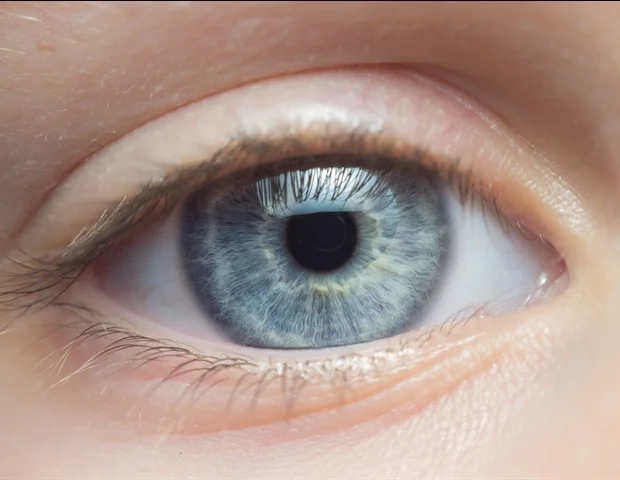Scientists at Trinity College Dublin have announced a major breakthrough with important implications for sufferers of a common eye disease – dry Age-Related Macular Degeneration (AMD) – which can cause total blindness in sufferers, and for which there are currently no approved therapies.
The scientists discovered that a key component of the cells lining the retinal blood vessels, namely claudin-5, may be central to the development of the common blinding eye disease, AMD. In pre-clinical models, it was discovered that “leaky blood vessels” pre-disposed the eye to developing features of AMD.
We were initially surprised that these blood vessels of the inner retina contributed to an AMD-like pathology, however it now appears that their dysfunction may represent one of the earliest initiating factors of the disease.”
Dr Natalie Hudson, Post-doctoral researcher, Trinity College Dublin, and first author of the study
Age-Related Macular Degeneration (AMD)
AMD is the most common form of central retinal blindness in the aging population. The disease involves a loss of central visual acuity, such that everyday tasks such as reading, watching TV, driving, or using computers become difficult and in some cases impossible.
There are two forms of AMD: ‘dry’ and ‘wet’. While therapies are available for the management of wet AMD, there are no treatments, therapies or cures yet approved for dry AMD, which accounts for the majority of cases in Ireland and worldwide.
Patients living with dry AMD are presently recommended to pursue lifestyle changes, such as stopping smoking, and improving diet and exercise regimes. Novel forms of therapy are desperately needed in an ever-aging society, with life expectancy currently far exceeding the rate of development of drugs for aging associated conditions.
Dr Matthew Campbell, Assistant Professor in Genetics at Trinity, said:
Identifying the early molecular events that cause dry AMD will allow us to develop a targeted approach to therapy. In this case, we believe that regulating the integrity of the retina’s blood vessels may, over time, help to prevent the development of dry AMD.”
Dr Mark Cahill, consultant Ophthalmologist at the Royal Victoria Eye and Ear Hospital (RVEEH), added:
Our findings have highlighted the power of basic and clinical research working towards identifying novel targets for AMD therapy, which will ultimately benefit patients in the future.”
Hudson, N. et al. (2019) Dysregulated claudin-5 cycling in the inner retina causes retinal pigment epithelial cell atrophy. JCI Insight. doi.org/10.1172/jci.insight.130273.
